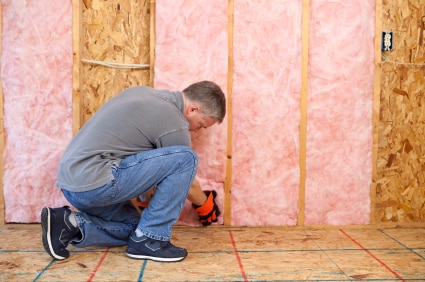Insulation: Learn the Basics
Insulation have a large effect on your home's energy consumption, comfort and indoor air quality. By choosing the right insulation material, you are taking a step towards a healthier, more comfortable environment for your home and reducing your energy bills for years to come.

Insulation has a large effect on your home’s energy consumption, comfort and indoor air quality.
By choosing the right insulation material, you are taking a step towards a healthier, more comfortable environment for your home and reducing your energy bills for years to come.
There are three basic insulation types that are commonly used in homes.
- Batts and blankets: Made of fibreglass, “glass wool,” or cotton – batts are the most common choice when the space that needs insulation can be easily accessed. Blankets often come with a moisture barrier. Thickness range from 1 to 13 centimetres. They must be securely attached to studs in the walls or rafters in the ceiling or floor. It must not be compressed as its efficiency will be diminished.
- Loose-fill: Typically made up of mineral wool, cellulose fibre, cotton, etc.. Loose-fill insulation is fast and easy to install. As they can either be poured by hand or machine blown, they can easily fit into areas where other insulation may be difficult to install.
- Rigid insulation boards: These are pre-cut boards that are made of polystyrene. They are more often used under wooden floors, roof decks or around concrete slabs. It is recommended that they be installed between non-combustible surfaces, as these plastic boards become toxic when ignited.
More insulation tips
- Ensure that your builder is licensed to install insulation. Request their licence number and check it with your state licensing public register.
- When selecting your insulation, make sure that it’s covered by Australian Standards and that it meets the requirement of your local building authority.
- R-value is a term that is most used when purchasing insulation. An R-value is a measure of thermal resistance or heat transfer. The performance of the insulation material depends on the R-value. The higher the value, the higher the level of insulation.
- There are R-value requirements per state. In Adelaide, the recommended insulation R-value is 3.2 for the ceiling or roof and 1.9 for the walls. In colder climates – e.g. Mt Gambier – a higher insulation R-value is recommended, 3.7 in ceiling or roof and 2.2 in walls.* Check with your contractor about the R-value requirement in your area.
- The performance of the insulation material depends on the R-value. The higher the value, the higher the level of insulation.
- Check if your selected insulation is non-combustible or fire-treated. By law, all insulation products should have a fire rating.
If you want to find out which insulation is best for your home as well as how much it will cost, post your job. You’re sure to get free estimates within the day.
_________________________________________